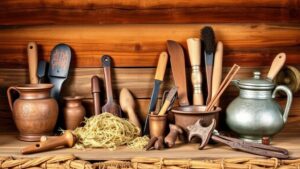Selling Mining Artifacts: Tips for Targeting Industrial Collectors
Selling Mining Artifacts: Tips for Targeting Industrial Collectors
The market for mining artifacts has seen a resurgence, driven by an increasing interest in industrial history and heritage. Collectors, enthusiasts, and museums are eager to acquire authentic pieces that tell the story of mining operations and the industrial revolution. This article will provide critical insights into effectively selling mining artifacts, emphasizing how to target industrial collectors.
Understanding the Target Audience
To sell mining artifacts successfully, it is essential to understand the target audience–industrial collectors. e collectors can range from private individuals passionate about history to institutional buyers, such as museums or educational organizations, that aim to enhance their collections. Understanding their motivations can help sellers tailor their approach.
- Passionate Collectors: Some individuals collect mining artifacts for personal enjoyment and the thrill of the hunt. They often seek rare pieces that have a story or are linked to significant mining operations.
- Museums and Institutions: These buyers are focused on acquiring items that contribute to educational exhibits or enhance historical accuracy in their collections. typically seek items with well-documented provenance.
Recognizing these motivations allows sellers to position their artifacts in ways that resonate with potential buyers, whether by emphasizing historical significance or rarity.
Provenance and Authenticity: Key Selling Points
When dealing with mining artifacts, provenance and authenticity are paramount. Buyers want items with a verifiable history, which significantly increases their value. Providing documentation that traces an artifacts journey, such as purchase receipts, photographs, or historical accounts, can enhance trust and desirability.
For example, a mining helmet used in a well-documented mining disaster could fetch a higher price if accompanied by newspaper clippings or reports chronicling the event. On the other hand, a similar helmet without such documentation may be viewed as less valuable.
- Consider utilizing documentation tools such as:
- Certification from a recognized appraiser or historian
- Period photographs showcasing the item in use
- Original advertisements or catalog entries
Knowing What Sells: Popular Mining Artifacts
Understanding which types of mining artifacts hold the most value helps sellers to concentrate their efforts effectively. The market for mining artifacts can vary significantly, but certain categories have proven particularly appealing:
- Tools and Equipment: Vintage tools, such as picks, drills, and miners’ lamps, are often sought after. Items used directly in mining processes tend to attract collectors.
- Locomotives and Rail Cars: Miniature models or parts from historical mining locomotives are popular among collectors. r connection to the broader industrial story adds to their appeal.
- Mining Company Memorabilia: Vintage signs, uniforms, and documents from well-known mining companies are at the top of many collectors lists.
Behavioral patterns show that mining artifacts associated with renowned mines in well-documented mining towns often have higher interest and value.
Effective Marketing Strategies
To successfully market mining artifacts to industrial collectors, sellers must implement creative and strategic marketing strategies. Here are some effective approaches:
- Online Marketplaces: Platforms like eBay, Etsy, and specialized auction houses cater to niche collectors. Each platform has its demographic, so tailored content is crucial.
- Social Media Engagement: Utilizing platforms such as Instagram and Facebook can create a community around mining history. Regular posting of high-quality photographs and engaging stories about artifacts can attract a following and drive interest.
- Trade Shows and Collecting Events: Participating in trade shows provides opportunities to connect with potential buyers directly. Presenting artifacts in person allows for discussions about provenance and historical significance.
Pricing Strategies and Negotiation
Determining the right price point for mining artifacts can be challenging but critical for sales success. Researching comparable items in the market and understanding current demand is essential. Collectors are often more willing to negotiate, especially when an item has a compelling story or background.
For sellers, implementing a tiered pricing approach can appeal to a broader audience. For example, items priced at multiple tiers can help engage both casual collectors and serious enthusiasts. Establishing a pricing range based on the artifacts condition, rarity, and provenance is advisable.
Building Relationships in the Collecting Community
Long-term success in selling mining artifacts relies heavily on building relationships within the collecting community. Networking with other collectors, historians, and museum professionals can open doors for referrals and insights into the market. Active participation in relevant forums and organizations can build a reputation as a trustworthy seller.
This community support is evidenced by many successful collectors who began as part-time hobbyists and built connections leading to thriving businesses in the niche market of mining artifacts.
Conclusion
Selling mining artifacts to industrial collectors requires an understanding of the target audience, maintaining authenticity and provenance, and employing effective marketing strategies. Sellers who recognize the interests of collectors, utilize strong documentation practices, and engage with the community can successfully navigate this rewarding market. By leveraging these insights, individuals can effectively share their passion for mining history while achieving their selling goals.
To wrap up, whether a private collector or a seller looking to enter the market, applying these tips will enhance the likelihood of success in selling mining artifacts.



